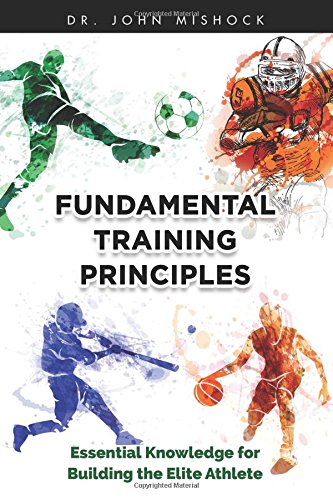
By Dr. John R. Mishock, PT, DPT, DC
Physical therapists are doctorate level trained health care providers who are experts in exercise, function movement, and performance. In practice, physical therapists use a three main muscle contraction types (concentric, eccentric, and isometric) to improve a patient’s quality of movement. Today, we will focus on the isometric muscle contraction and how it can accelerate strength gains when used in an exercise routine. (This information and more can be found in my book, “Fundamental Training Principles: Essential Knowledge for Building the Elite Athlete.”)
Isometric exercises are contractions of a particular muscle for an extended period of time without movement of the joint. For example, a high plank (push up position on hands and toes), the core muscles are working, without actively changing the muscle length or joint motion. Isometric muscle contraction causes increased muscle force due to greater recruitment and increased firing rate at that given joint angle.
Isometric exercise can be performed in two ways. First, a movement can be performed and held at the mid or end range of motion. For example, perform a squat and lower the body to approximately 120 degrees of knee bend and hold the position for 7 seconds. Move out of that position and repeat 6-10 times. Secondly, it can be used for dynamic sports performance and injury prevention. For example, perform and explosive jump but on the landing stick or hold the landing position for 7 seconds. After the 7 second hold, jump back to the starting position. For the athlete, strong isometric contraction during dynamic movements acts like a block or strong base for subsequent muscle contractions. Without this strong base there are energy leaks in power lending to decrease quality movement, poor performance and potential for injury. The ability to train in this way can greatly enhance balance, motor control, and power.
For the health conscious older person, studies have shown that isometric resistance training can lower a patient’s blood pressure over time comparable or better than cardiovascular exercise or other types of resistance training. (Mayo Clin. Proc 2014) Isometrics exercises can be used for patients with arthritis or limited functional because this type of exercise does put much strain on joints and can be performed in a limited range of motion. This type of training can be a safe inexpensive alternative to resistance training using weights at a gym.
We can help!
Relieve pain and increase function.
Call for a FREE Phone Consultation 484-948-2800.
Visit our website at www.mishock.wpengine.com.
Call 610-327-2600 to Schedule your appointment today, at one of our 6 convenient locations in Skippack, Gilbertsville*, Barto, Phoenixville*, Pottstown, and Limerick* (inside the Spring Valley YMCA).
Appointments available 7:00am to 8:00pm, ALL locations, most days!
*Saturday Hours
Dr. Mishock is one of only a few clinicians with doctorate level degrees in both physical therapy and chiropractic in the state of Pennsylvania. He has authored two books; “The Rubber Arm, Using Science to Increase Pitch Control, Improved Velocity, and Prevent Elbow and Shoulder Injuries” and “Fundamental Training Principles: Essential Knowledge for Building the Elite Athlete.” Found at our clinics or on Amazon.
